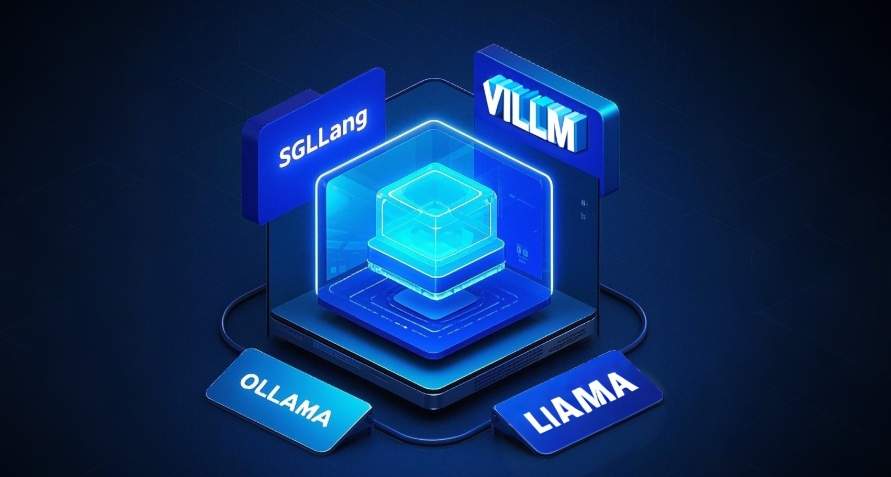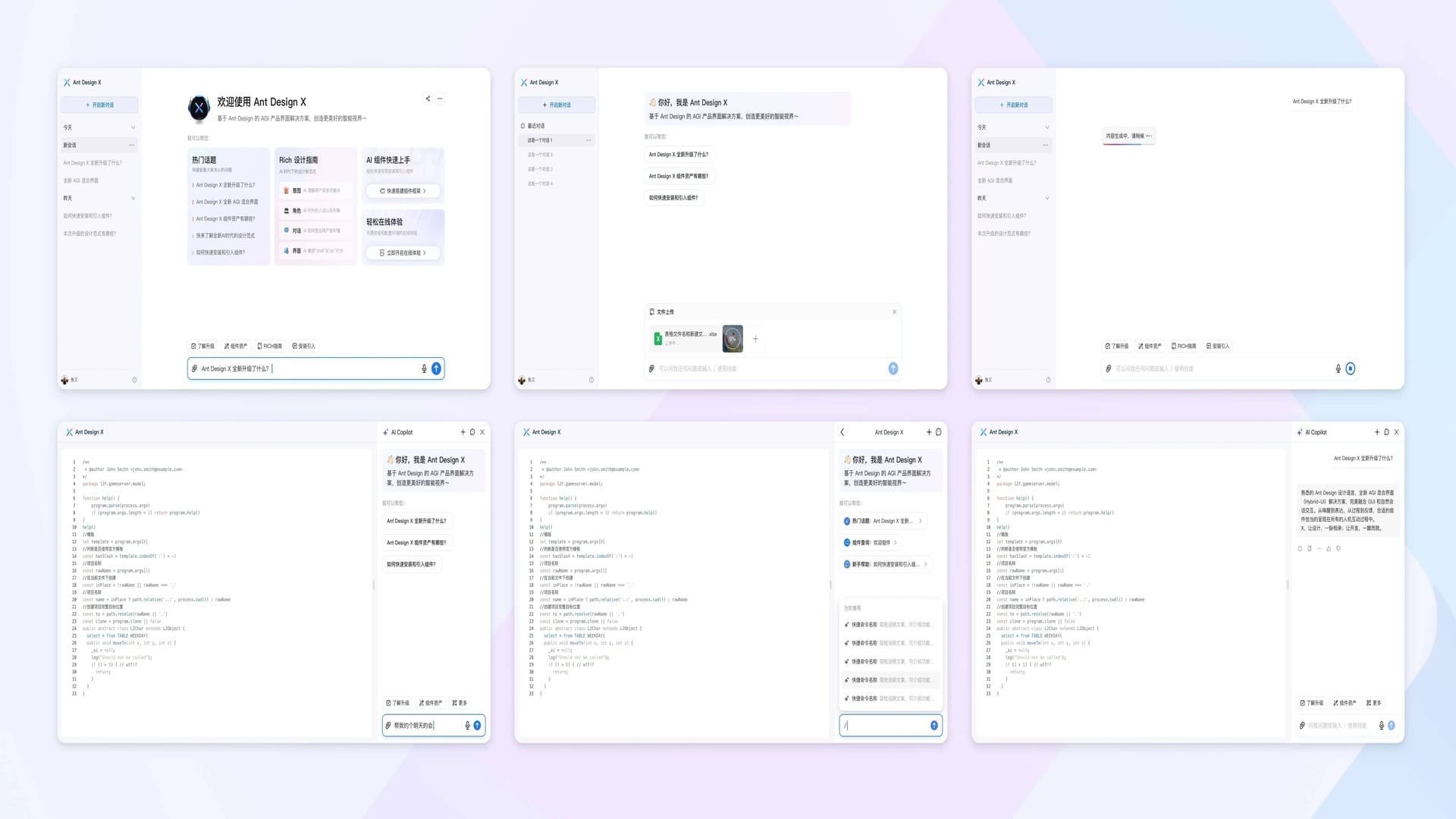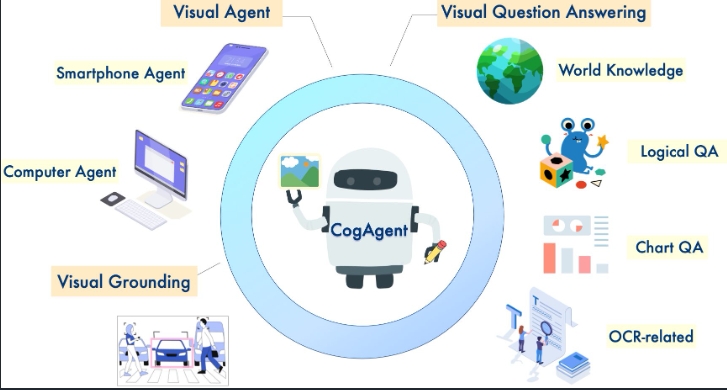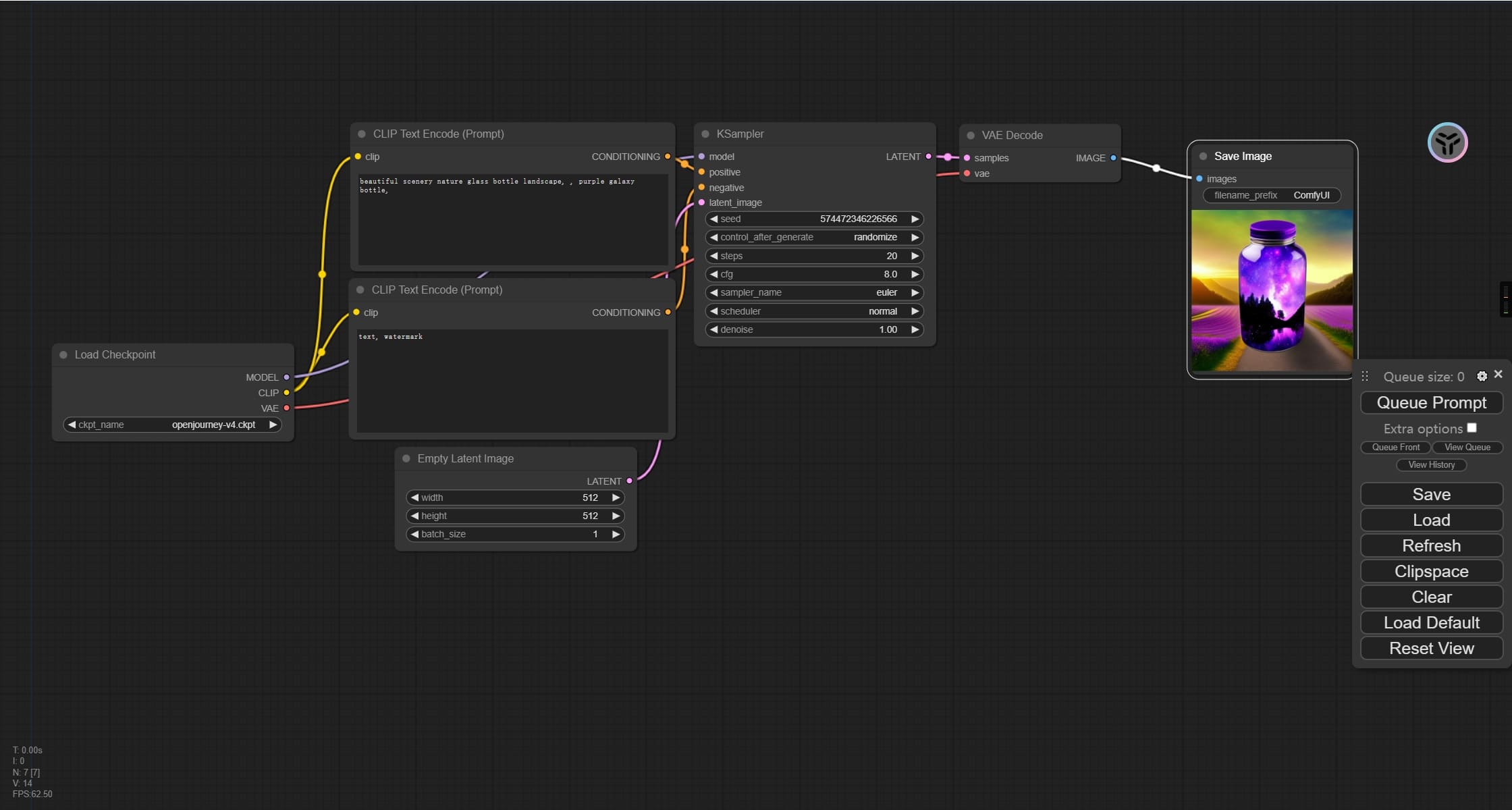AI Model Tools Comparison How to Choose Between SGLang, Ollama, VLLM, and LLaMA.cpp?

In today’s technological wave, large language models have become the core driving force behind development across various fields, from intelligent customer service and content creation to research assistance and code generation. With the market flooded with numerous AI model tools, choosing the most suitable one has become a challenge for many developers, researchers, and enthusiasts. Today, let’s dive deep into analyzing several popular AI model tools—SGLang, Ollama, VLLM, and LLaMA.cpp—to explore their unique capabilities and ideal use cases.
SGLang: The Rising Star with Outstanding Performance
SGLang, an open-source inference engine developed by the Berkeley team, has brought significant performance improvements with its latest v0.4 release. Its core technical highlights include:
-
Zero-overhead batch scheduler: Achieves 1.1x throughput improvement by overlapping CPU scheduling with GPU computation.
-
Cache-aware load balancer: Introduces intelligent routing mechanisms, achieving up to 1.9x throughput improvement and increasing cache hit rates by 3.8x.
-
Data-parallel attention mechanism for DeepSeek models: Delivers up to 1.9x decoding throughput improvement for specific models.
-
Fast structured output based on xgrammar: Up to 10x faster in JSON decoding tasks compared to other open-source solutions.
These optimizations make SGLang excel in handling large-scale concurrent requests, particularly suitable for enterprise-level applications requiring high-performance inference. For instance, when processing batch requests with shared prefixes, the new version can achieve a throughput of 158,596 tokens/s with a cache hit rate of 75%.
Ollama: A User-Friendly Local Runtime Framework Based on llama.cpp
Ollama is a high-level wrapper tool developed on top of llama.cpp, inheriting its efficient inference capabilities while significantly simplifying the user experience. Its installation process is remarkably smooth—whether you’re on Windows, Linux, or MacOS, you can complete the setup in just minutes following the clear instructions on the official website. This cross-platform compatibility allows users on different systems to embrace large language model technology without barriers.
As a higher-level application built on llama.cpp, Ollama not only maintains the efficient performance of its underlying engine but also provides a more user-friendly interface and richer features. Its model library is like a treasure trove, containing over 1,700 large language models including Llama and Qwen. Whether you’re exploring cutting-edge academic research or engaging in creative writing and daily Q&A, you can find the perfect model for your needs. Operation is incredibly simple—just one command ollama run <model_name>instantly awakens the model and starts the intelligent interaction.
Moreover, Ollama is highly customizable, allowing users to customize models through Modelfile. You can flexibly adjust creativity parameters or system messages to make model outputs fit specific scenarios. For example, you can increase creativity parameters when writing stories to generate imaginative plots, or optimize system messages for precise and rigorous answers to professional questions. In daily use, whether for personal developers wanting to quickly validate creative projects or students seeking learning assistance, Ollama proves to be a perfect companion with its convenience and flexibility.
VLLM: A Powerful Engine Focused on Efficient Inference
VLLM serves as a super “compute manager,” pushing the efficiency of large model inference to new heights. It’s built on the innovative PagedAttention technology, which provides fine-grained management of Key and Value Cache in the attention module. This design, inspired by operating system virtual memory paging concepts, divides KV cache into numerous small blocks, cleverly mapping continuous logical blocks of sequences to non-continuous physical blocks. Memory waste is kept extremely low, typically less than 4%. This means precious GPU memory resources are fully utilized, allowing for processing more sequences simultaneously and significantly increasing batch size.
In multi-GPU environments, VLLM’s performance is exceptional. Its Continuous Batching technology allows new requests to join ongoing batches, achieving dynamic batch processing and avoiding resource idling common in traditional batch processing methods. Like an efficient pipeline, tasks flow continuously, greatly improving GPU utilization. In some scenarios, it shows up to 24x throughput improvement compared to native HF Transformers, achieving a quantum leap in large model inference speed.
For example, in real-time chatbot scenarios facing massive concurrent user requests, VLLM can quickly respond to user inputs and smoothly generate high-quality replies. It also supports various quantization techniques like GPTQ and AWQ, further compressing model memory usage while maintaining excellent inference performance under resource constraints, providing solid technical support for large-scale online inference services.
Notably, VLLM offers multiple deployment options: it can be used directly as a Python package, deployed as an OpenAI-compatible API server, or through Docker containerization. This flexibility allows it to better adapt to different production environment needs. However, it’s worth noting that VLLM currently only supports Linux systems, which presents some limitations in terms of cross-platform compatibility.
LLaMA.cpp: A Lightweight Inference Framework
LLaMA.cpp, as a highly optimized inference framework, brings numerous breakthrough features in its latest version:
- Quantization Technology:
- Supports multiple quantization precisions from 2-bit to 8-bit
- Innovative K-quant quantization method significantly reduces memory usage while maintaining model performance
- GGUF format support for more efficient model storage and loading
- Hardware Optimization:
- Optimized for Apple Silicon (M1/M2)
- NEON instruction set optimization for ARM devices
- AVX/AVX2/AVX-512 instruction set support for x86 architecture
- Inference Optimization:
- Efficient KV cache management
- Batch inference support
- Dynamic context length extension
These optimizations enable LLaMA.cpp to achieve impressive performance on resource-constrained devices. For example, 13B models can achieve near real-time inference speed on M1/M2-equipped MacBooks, while 7B models can achieve usable inference performance even on embedded devices like Raspberry Pi.
Beyond these features, LLaMA.cpp offers several unique advantages:
- Supports bindings for multiple programming languages including Python, Node.js, and Golang
- Provides HTTP server-based API interface with OpenAI compatibility
- Built-in Canary mode for dynamic parameter adjustment during runtime
- Metal GPU backend support for better performance on macOS
Multi-dimensional Comparison:
Let’s put these tools head-to-head, comparing them across multiple dimensions like performance, ease of use, and application scenarios to help you find the perfect tool for your needs.
| Tool | Performance | Ease of Use | Use Cases | Hardware Requirements | Model Support | Deployment Methods | System Support |
|---|---|---|---|---|---|---|---|
| SGLang v0.4 | 1.1x throughput improvement with zero-overhead batching, 1.9x with cache-aware load balancing, 10x faster structured output | Requires technical expertise but provides complete API and examples | Enterprise inference services, high-concurrency scenarios, structured output applications | Recommends A100/H100, supports multi-GPU deployment | Comprehensive support for mainstream models, specially optimized for DeepSeek | Docker, Python package | Linux |
| Ollama | Inherits llama.cpp’s efficient inference capabilities with convenient model management | User-friendly with GUI installer, one-click run, and REST API support | Personal development validation, student learning assistance, daily Q&A, creative writing | Same as llama.cpp with simplified resource management | Rich library with 1,700+ models, one-click installation | Standalone app, Docker, REST API | Windows, macOS, Linux |
| VLLM | Excellent performance in multi-GPU environments with PagedAttention and Continuous Batching | Requires technical expertise, relatively complex configuration | Large-scale online inference services, high-concurrency scenarios | Requires NVIDIA GPU, recommends A100/H100 | Supports mainstream Hugging Face models | Python package, OpenAI-compatible API, Docker | Linux only |
| LLaMA.cpp | Multi-level quantization support, cross-platform optimization, efficient inference | Intuitive CLI, multiple language bindings | Edge device deployment, mobile applications, local services | Supports CPU/GPU, optimized for various hardware | GGUF format models, broad compatibility | CLI tool, API server, language bindings | All platforms |
In conclusion, if you’re a professional research team with powerful computing resources pursuing ultimate inference speed, SGLang is undoubtedly the top choice, serving as a super engine for cutting-edge research exploration. If you’re an individual developer, student, or AI newcomer wanting to easily experiment with large models locally, Ollama is your friendly companion, ready to respond to your creative needs. For developers building large-scale online services facing massive user requests, VLLM serves as a solid backbone, ensuring smooth service with efficient inference. And if you have limited hardware resources and just want to experience large models on small devices or quickly validate simple ideas, LLaMA.cpp is your key to accessible AI.
In this flourishing AI era, precisely choosing tools based on your needs enables you to race ahead on the path of innovation, fully unleashing the unlimited potential of large models to bring unprecedented convenience and breakthroughs to life, work, and learning.
More Articles
![OpenAI 12-Day Technical Livestream Highlights Detailed Report [December 2024]](/_astro/openai-12day.C2KzT-7l_1ndTgg.jpg)







